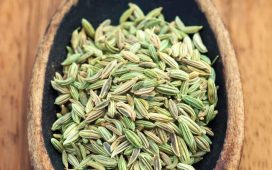As I began to get pulled into cookbooks, foodie videos, and kitchen shops, I noticed that knives and chopping techniques were a thing. Coming from a background where my mother, a very good cook, and her women friends used one or max two battered knives to do their cutting and chopping, and from a city that the ‘boti’ – the excellently functional long-curved blade that cuts on a platform held down by the foot – to dismantle all kinds of veggies and fish, I hadn’t grasped that there could be different knives for different tasks.
But I’d been into drawing-painting since I was a kid, and I understood the need for different pencils, brushes and pens for different tasks. I clicked my pre-existing art material obsession into cooking equipment fetishism, and began to squander extra money on expensive culinary objects, especially knives.
Looking back, I realise that visual thrill-wise, the best thing a cooking show offers you is the blur of some sensei-chef’s super-sharp blade dismembering an onion or some other defenceless vegetable. The feeling you get when you look down at something you’ve rendered into super thin fine slices or a keema-fied heap, is also the closest to having executed a nice bit of drawing or painting.
Across the years, my knife collection has grown, mostly Western and quasi-Japanese knives; medium-sized chef’s knives; santoku-style vegetable knives; a couple of big meat knives for hunks that have never entered my kitchen; a super-fancy bread knife; small paring knives; serrated knives only meant for tomatoes. People close to me taunt, ‘This fellow collects cheffy stuff more than he cooks!’
I do tend to cook more when I’m visiting friends abroad. At home, the daily desi khana is left in the able hands of G, the maestro who is kind enough to cook for me.G is unimpressed by kitchen paraphernalia. G has two kadhais he likes to use, the same pressure cooker, 2-3 steel thingies for stirring (ignoring the array of wood and silicone spatulas and spoons), and one normal-type peeler. To produce his fantastic meals, G deploys two knives outside my set of ‘do not touch’ blades. One is an old, 4-in veg knife I got in the 1980s, originally German, but now thoroughly naturalised with its point rounded. And the other – G’s only concession to my foreign-style knives – a serrated Victorinox tomato knife. There are times, say, prepping for a big dinner, when I’ve offered G a super-sharp knife. He spurns the idea with a grunt, continuing to produce wonders with his chosen instruments. That’s how much G and I like the Victorinox tomato one.
I’ve read many cookery articles that explain how skilled Western chefs need only two good knives – a small paring job and a 6-7-in chef’s knife with which they can go from big cutting to the most minute food surgery. A recent piece on a British news website asked famous chefs to name their favourite knives. Among the usual suspects – famous German heavy-hitters, £350+ Japanese Damascus blades, and bespoke products from small forges in remote parts of Britain – there was G’s humble tomato knife, priced at just £5-6, available on Amazon India for ₹580-640.
I’m not embarrassed by my fancier knives. But it’s satisfying to know that two master chefs, separated by miles and cooking styles, Yotam Ottolenghi and G, both grab the same plastic-handled gem in the heat of creation.









